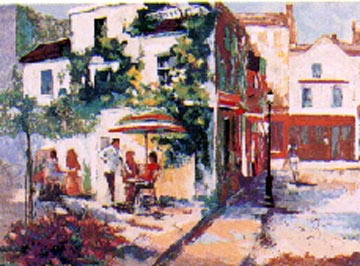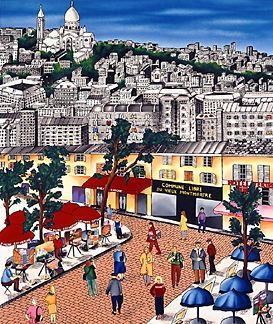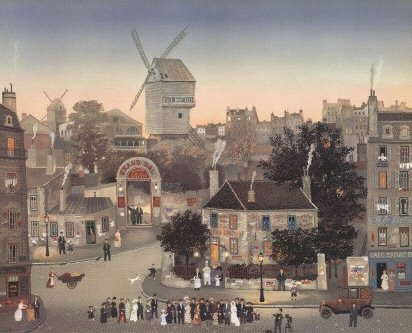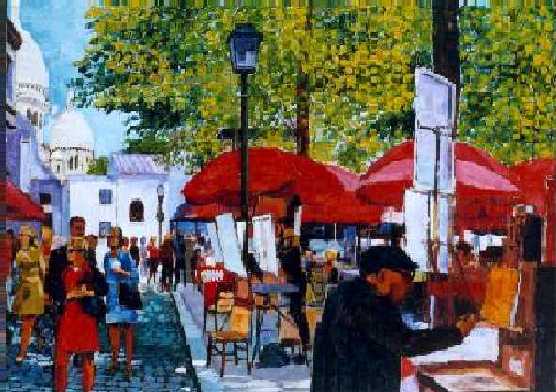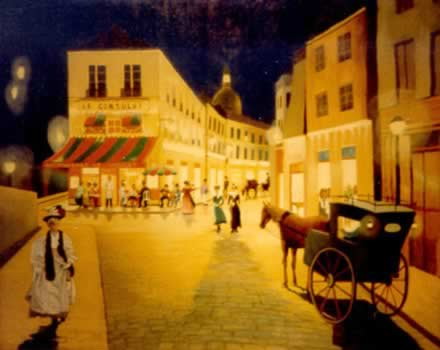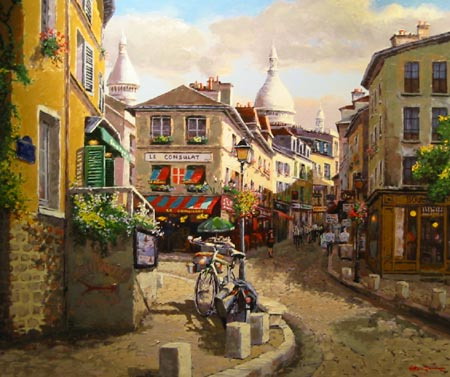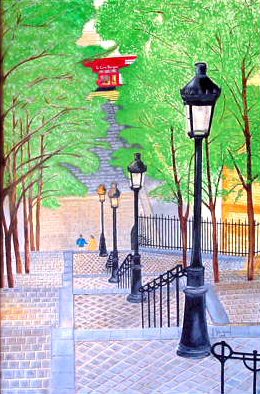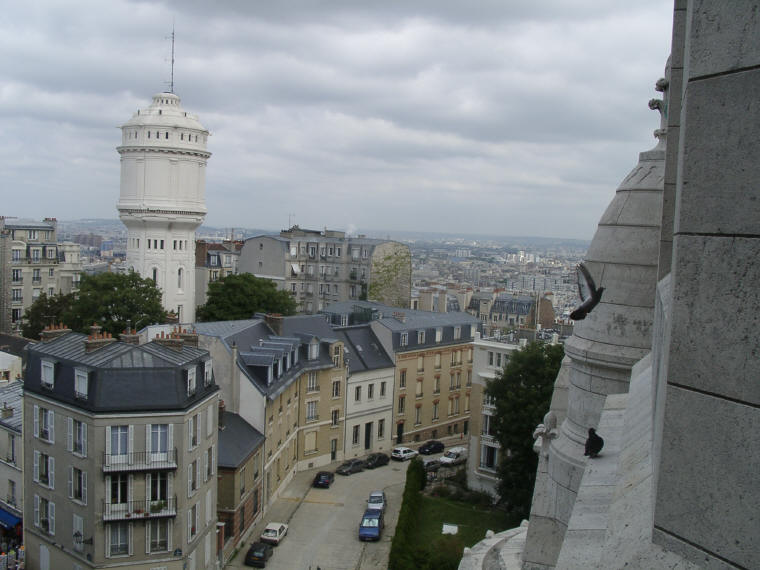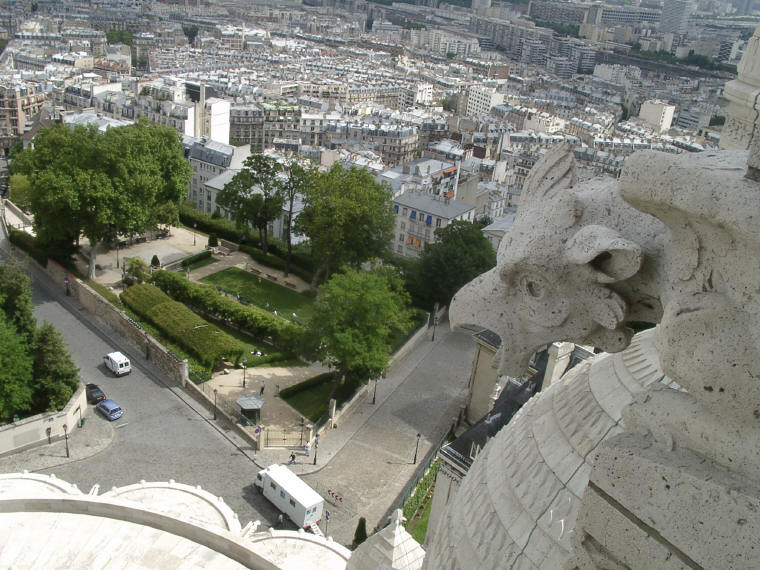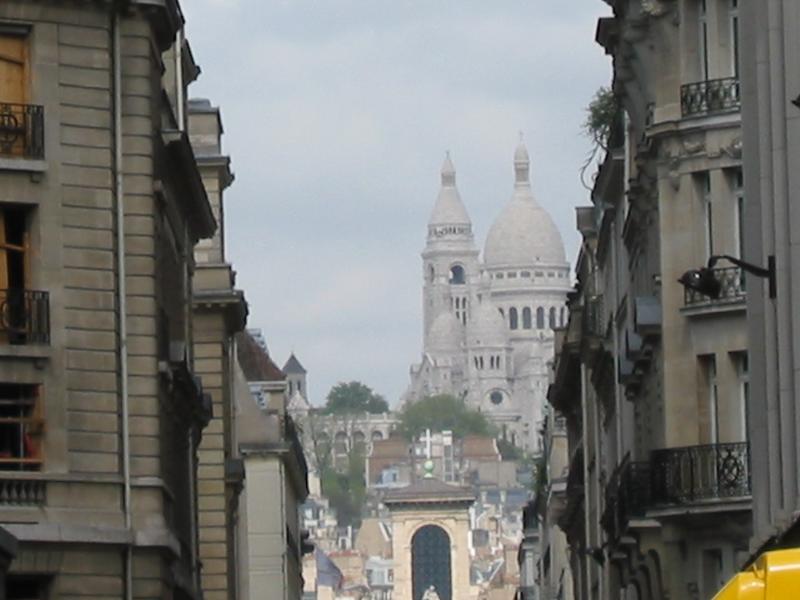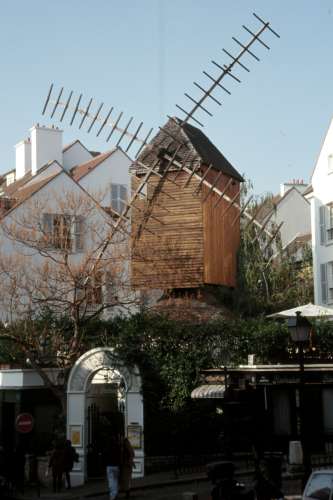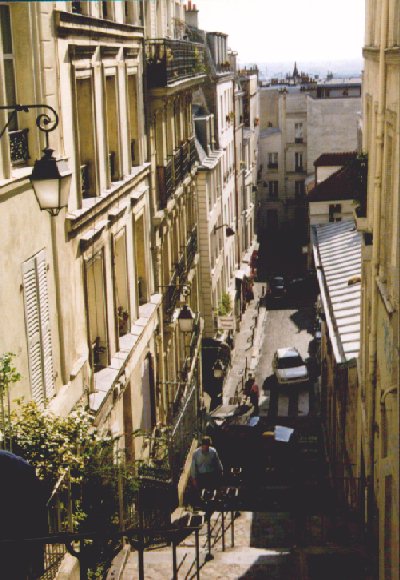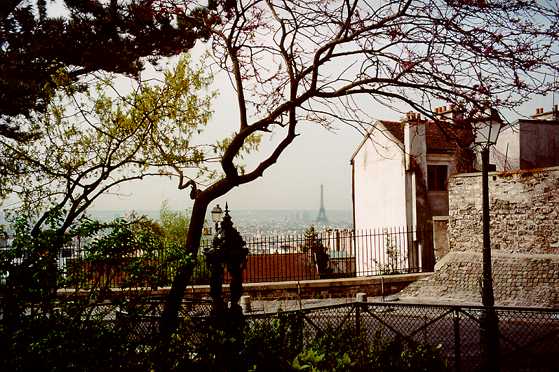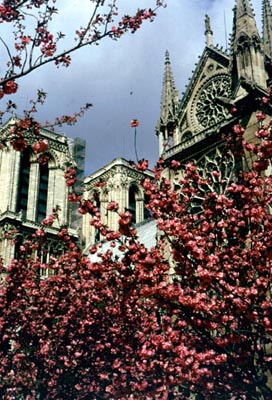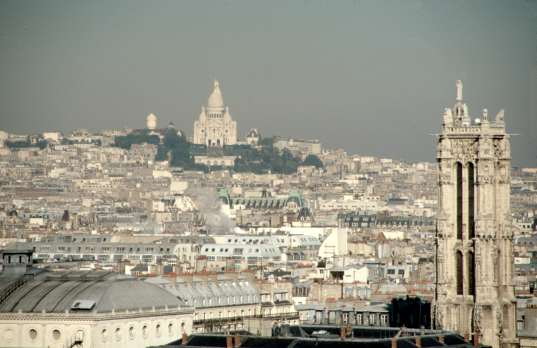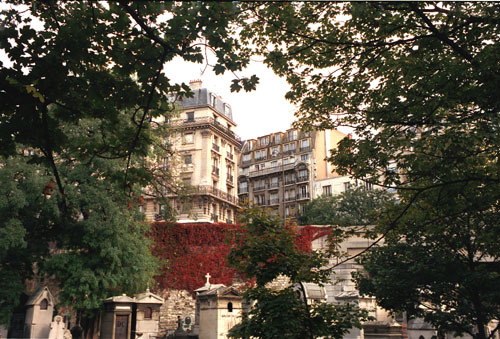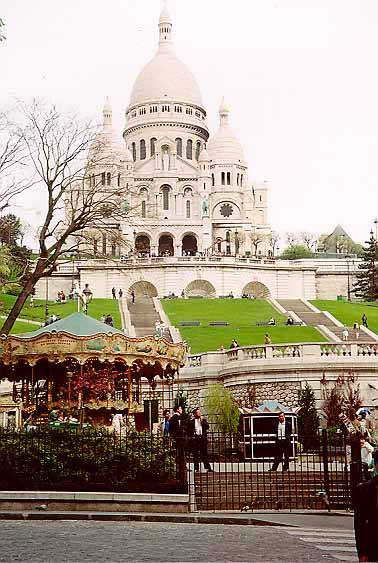· Set on a hill 130 meters high, is the area of Montmartre. It is located in the north of Paris, France, in the 18th arrondissement, a part of the Right Bank. The hill (or “butte”) of Montmarte is rich in the gypsum which is used to make the plaster of Paris.
· The name "Montmartre" comes from "Mont des Martyrs" because the bishop Saint Denis (patron Saint of France), the priest Rustique, and the archdeacon Eleuthere were all decapitated there around the year 272.
· In the 12th century, Benedictine monks built a monastery near Rue des Abesses. It later became the seat of a powerful abbey. Here in 1534 Ignatius Loyola and seven companions took the vows that lead to the creation of the Jesuits.
· Many people moved suddenly to Montmartre in the 19th century because of the destruction of half Paris (the poorer side) by the great urbanistic works of Baron Haussman in Paris. When Napoleon III and his city planner Baron Haussmann planned out how to make Paris the most beautiful city in Europe, the first step, naturally, was to grant large sweeps of land near the center of the city to Haussmann's friends and financial supporters. This drove the original inhabitants to the edges of the city: to the districts of Clichy, La Villette, and the hill with a view of the city, Montmartre.
· From before the Revolution, rustic Montmartre was infamous for its dangerous taverns - at some of which it was reputed that unwanted daughters could be sold to the wealthy, who had country pleasure houses in the vicinity.
· To counteract the neighborhood's earned reputation for disorderliness and loose living, Montmartre's Basilica of the Sacré Coeur was built here from 1876 to 1912 by public subscription as a gesture of expiation after the defeat of 1871 in the Franco-Prussian War. Its white dome is a highly visible landmark in the city where just below it, artists still set up their easels each day amidst the tables and colorful umbrellas of Place du Tertre.
· Fortunately, the presence of the basilica did not put an end to night life. Since Montmartre was officially outside the city and free of its taxes, and the nuns there made wine, the hill did not take long to become the place to go to get drunk cheaply.
· On the dirt paths surrounding the scaffolding of the half-built Sacré-Coeur, destitute, often homeless streetwalkers offered themselves to passersby. The butte was still a haven for the poorest, most marginal members of society. All along the wide boulevards at the foot of the hill, a series of dubious nightclubs sprang up, and as their reputation for wildness and bohemianism spread, they began to attract visitors from the rest of Paris - slumming aristocrats, demi-mondaines, bourgeois tourists.
· From there, it was only a short step for Montmartre to become the center of free-wheeling and decadent entertainment in the years at the end of the 19th century and the beginning of the 20th century, especially in the popular cabaret the "Moulin Rouge" and at the "Lapin Agile" where some of the city's most famous artists, singers and performers regularly appeared.
· Near the end of the 19th century, Montmartre became the principal artistic centers of Paris. Pablo Picasso, Amedeo Modigliani and other impoverished artists lived and worked in a commune, a building called Le Bateau-Lavoir during the years 1904-1909. Artist associations such as Les Nabis were formed and individuals such as Vincent Van Gogh, Pierre Brissaud, Alfred Jarry, Jacques Villon, Raymond Duchamp-Villon, Henri Matisse, André Derain, Suzanne Valadon, Pierre-Auguste Renoir, Edgar Degas, Maurice Utrillo, Camille Pissarro, Toulouse-Lautrec plus many other artists worked in Montmartre and drew part of their inspiration from the area. Many of these renowned artists are buried in the Cimetière de Montmartre
· Montmarte in October (when the play takes place): the weather is often rainy; the Montmarte harvest - the grape of the last Paris wineyard is harvested during the festival.
· Pronunciation: mOn-'märtr&; Click to hear how to pronounce:

